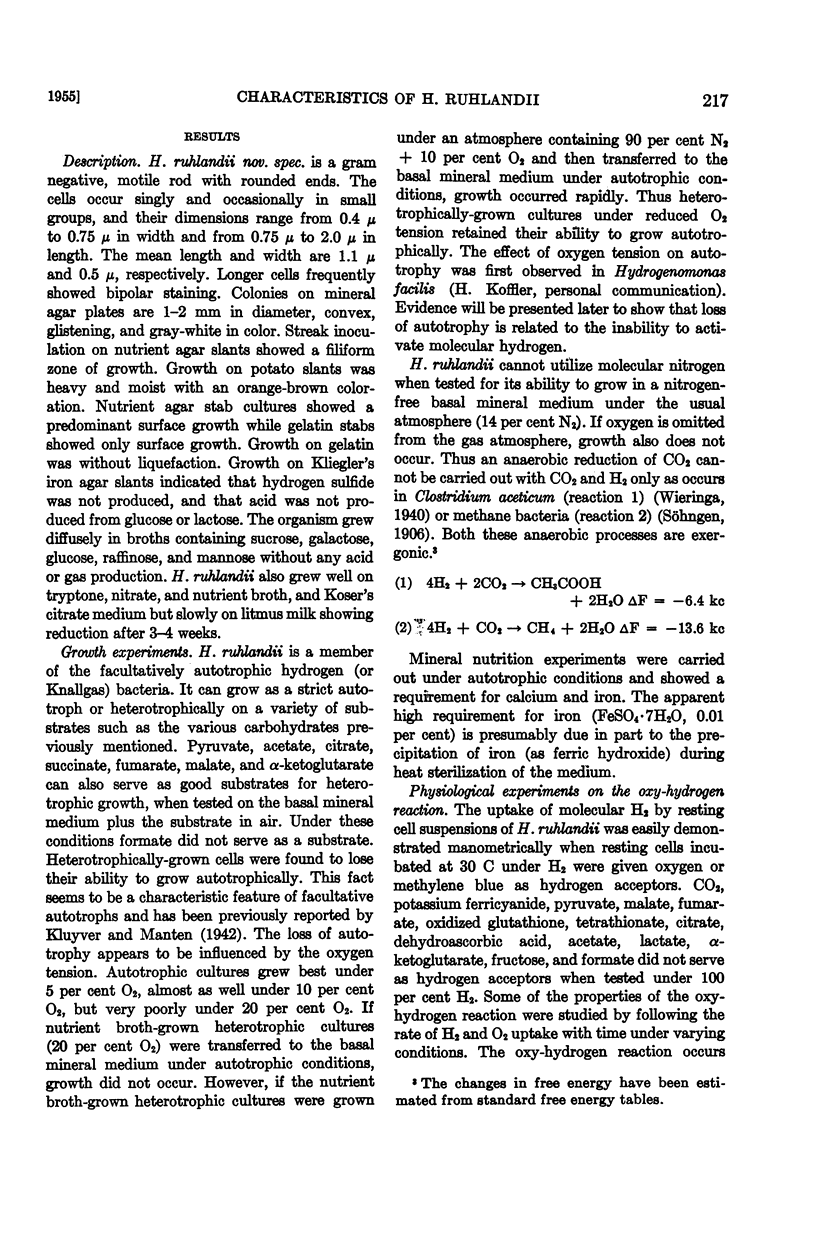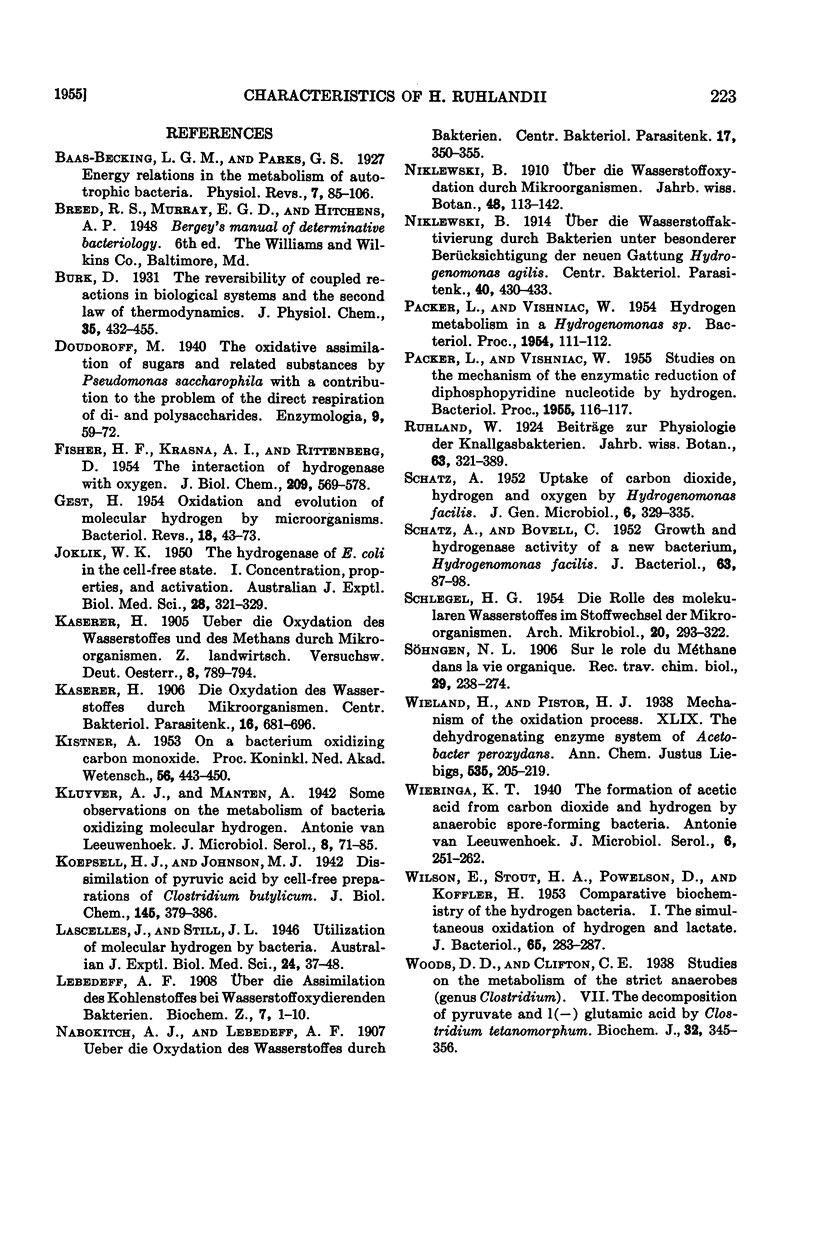Full text
PDF







Selected References
These references are in PubMed. This may not be the complete list of references from this article.
- FISHER H. F., KRASNA A. I., RITTENBERG D. The interaction of hydrogenase with oxygen. J Biol Chem. 1954 Aug;209(2):569–578. [PubMed] [Google Scholar]
- GEST H. Oxidation and evolution of molecular hydrogen by microorganisms. Bacteriol Rev. 1954 Mar;18(1):43–73. doi: 10.1128/br.18.1.43-73.1954. [DOI] [PMC free article] [PubMed] [Google Scholar]
- JOKLIK W. K. The hydrogenase of E. coli in the cell-free state. I. Concentration, properties and activation. Aust J Exp Biol Med Sci. 1950 May;28(3):320–329. [PubMed] [Google Scholar]
- SCHATZ A., BOVELL C., Jr Growth and hydrogenase activity of a new bacterium, Hydrogenomonas facilis. J Bacteriol. 1952 Jan;63(1):87–98. doi: 10.1128/jb.63.1.87-98.1952. [DOI] [PMC free article] [PubMed] [Google Scholar]
- SCHATZ A. Uptake on carbon dioxide, hydrogen and oxygen by Hydrogenomonas facilis. J Gen Microbiol. 1952 May;6(3-4):329–335. doi: 10.1099/00221287-6-3-4-329. [DOI] [PubMed] [Google Scholar]
- SCHLEGEL H. G. Die Rolle des molekularen Wasserstoffs im Stoffwechsel der Mikroorganismen. Arch Mikrobiol. 1954;20(3):293–322. [PubMed] [Google Scholar]
- WILSON E., STOUT H. A., POWELSON D., KOFFLER H. Comparative biochemistry of the hydrogen bacteria. I. The simultaneous oxidation of hydrogen and lactate. J Bacteriol. 1953 Mar;65(3):283–287. doi: 10.1128/jb.65.3.283-287.1953. [DOI] [PMC free article] [PubMed] [Google Scholar]
- Woods D. D., Clifton C. E. Studies in the metabolism of the strict anaerobes (genus Clostridium): The decomposition of pyruvate and l-(+)glutamate by Clostridium tetanomorphum. Biochem J. 1938 Feb;32(2):345–356. doi: 10.1042/bj0320345. [DOI] [PMC free article] [PubMed] [Google Scholar]


